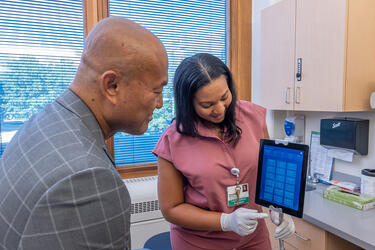
Student Mental Health at MIT
When should you give us a call? What can we do? Learn how MIT Health’s Student Mental Health & Counseling Services can help you.
Ask Our Digital Navigator
Need to schedule an appointment? Have a question about our services? Our friendly Digital Navigator is here to help.
Your PCP
Choosing a primary care provider (PCP) is your first step toward getting the most out of MIT Health.
Need an interpreter?
MIT Health can provide interpreter services for office visits or phone calls in more than 150 spoken languages and American Sign Language (ASL).



